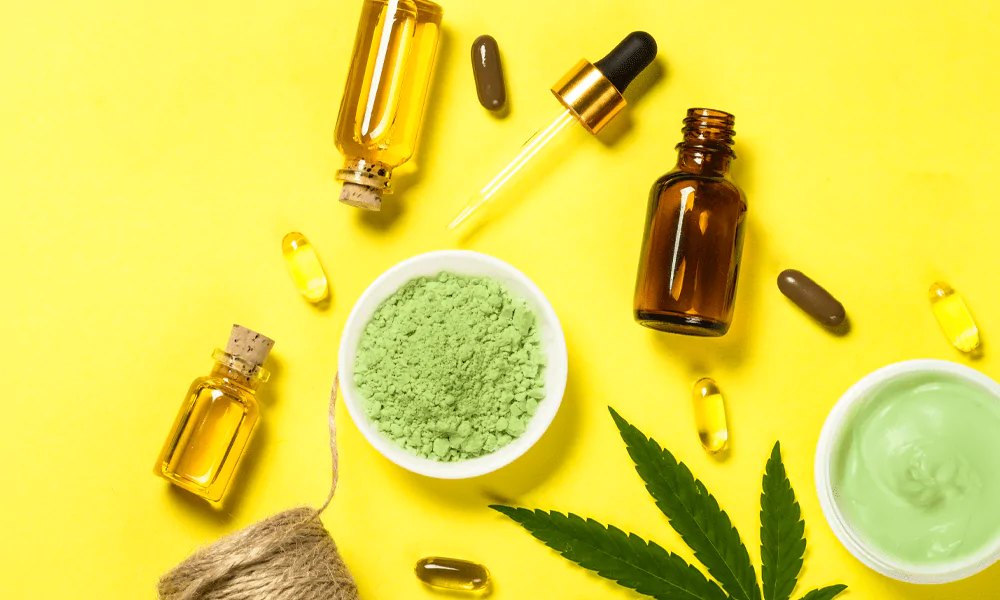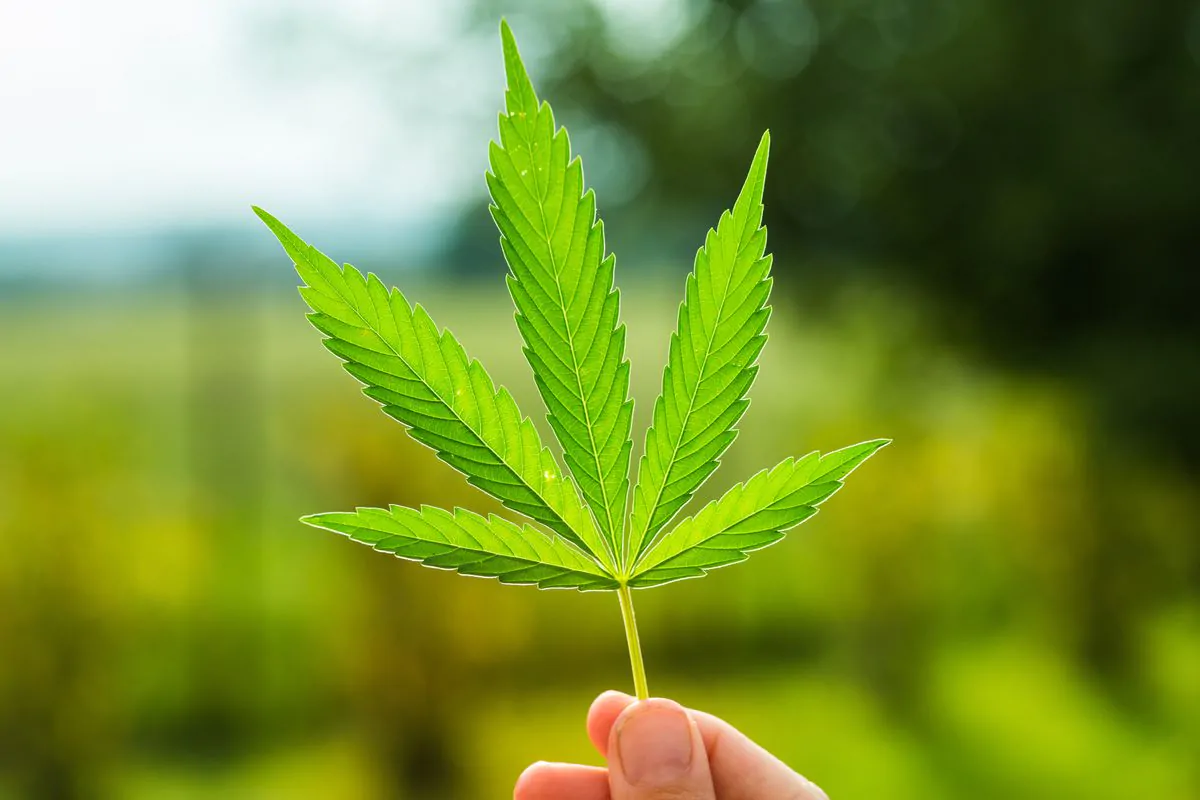Comparing THCV and CBDV

Hemp and different cannabis-related products have recently been legalized in more countries. Both long-time customers and newcomers alike are becoming more open-minded about the possibilities available to them. Cannabidiolvarin or CBDV and tetrahydrocannabivarin or THCV are among the choices. Regular marijuana users are likely familiar with THC but may not be aware of its cousin, THCv. THCv, on the other hand, is a psychoactive cannabinoid that has its own set of benefits while CBDV is Non-psychoactive with its benefits. Here we are going to compare THCV and CBDV:
What does THCV stand for?
Structure of THCV, commonly known as tetrahydrocannabivarin, the cannabinoid THCV. Because it is present in lesser amounts than the more well-known cannabinoids, THC and CBD, THCV, or tetrahydrocannabivarin, is considered a minor cannabinoid.
It is possible to eat THCV in the form of the plant material itself or as an isolated extract, the most popular of which is oil from cannabis and hemp plants.
THCV is establishing a reputation for its health benefits, and it is becoming better known. It affects the human body when it interacts with the cannabinoid receptors CB1 and CB2. Depending on where these receptors are located in the body, they trigger a chain reaction of reactions.
THCV Health Advantages
THCV has something for everyone, regardless of their experience with cannabis and cannabinoids.
Like other cannabinoids, THCv has an appetite-suppressing effect on its own. Some people are using THCv to help them lose weight and combat obesity. People with anorexia or a loss of appetite should avoid this cannabinoid.
THCv can manage blood sugar levels, which is positive. Fasting plasma glucose levels are reduced, and it may improve pancreatic function. According to the findings of several studies, type 2 diabetics may benefit from the ability to control their blood sugar levels.
Patients with post-traumatic stress disorder (PTSD) may find relief from panic attacks by using THCv. THCv has an edge here because it doesn’t inhibit the person’s feelings.
Treatment for osteoporosis and other bone-thinning disorders, THCv is also being studied as a possible treatment for osteoporosis.
Is THCV psychoactive?
You may question if THCV can make you high because it shares many structural similarities with THC. THCV has a psychoactive impact, which means it can make you feel euphoric. However, you’ll have to ingest a large amount of THCV before you feel the effects of intoxication. THC is still the most psychoactive cannabinoid and is mainly responsible for cannabis’s notorious high.
What is CBDV all about?
Cannabidivarin is another name for CBDV. Researchers in Germany originally discovered it in 1969. The structure of CBDV is comparable to that of CBD, making it a homolog.
Some strains of C. Indica landrace naturally have a higher concentration of CBDV than other strains. By nature, tobacco plants from Asia and Africa tend to have low THC levels.
GW Pharmaceuticals is now testing CBDV as an anticonvulsant, and the drug is expected to be commercially available in 2018. This organization is spearheading cannabinoid research and development.
CBDV was the principal cannabinoid of their cannabis product, GWP42006, used in the focal seizures and autism spectrum disorders survey.
Is CBDV psychoactive?
Non-psychoactive CBDV does not fall under the definition of a prohibited substance. A Home Office official confirmed this in response to a Freedom of Information request. Only THC and its equivalents and derivatives would be classified as illegal under federal law.
CBDV’s Health Advantages
Many of the advantages of CBD are also present in CBDV. Chronic pain, anxiety, insomnia, muscular relaxation, and more are said to be alleviated.
For chronic pain, inflammation, and hormone disruption, CBD is usually thought to be superior, but CBDV is believed to be ideal for neuropathic pain, migraines, and epilepsy.
Unfortunately, there isn’t a lot of research on CBDV isolate. GW Pharmaceuticals, a business working on a CBDV-based drug for nearly a decade, financed the majority of the publicly available research.
CBDV is the first cannabinoid we understand. It is used to alleviate nausea and vomiting. According to animal research, toxin-induced nausea in rats can be alleviated by both CBDV and THCV.
The nausea response is closely linked to the endocannabinoid system. Nausea sets in when the ECS is disrupted, making us feel sick. Nausea is alleviated when it is provoked.
A direct stimulatory effect on the ECS is preferable to a passive one when relieving nausea. Both CBDV and CBD are non-active agents. THC and THCV are considered superior because of their activating effect on the ECS in terms of antinausea.
Autism is a disease that has no known cure. Symptomatic support is an integral part of treatment for those suffering from the condition’s adverse effects (chronic anxiety, seizures, addictive behavior, and mood disorders).
The relaxing neurotransmitter GABA and the activating neurotransmitter glutamate were shown to be more evenly distributed in patients with ASD who took CBDV. Neurotypical and neurodiverse patients were compared in this study to see how CBDV affected their health.
Even people with autism spectrum disorder (ASD) have been found to have lower anandamide levels in the brain than the general population. The human body’s primary endocannabinoids are anandamide and anandecholine.
CBD reduces anandamide levels by inhibiting the enzyme FAAH, which breaks down anandamide.
The genetic ailment Rett syndrome is sporadic and difficult to treat. The purpose of therapy is to reduce a disorder’s symptoms while enhancing overall well-being.
People with Rett syndrome may soon be able to turn to CBDV, a relatively new therapy option. The study of the impact of CBDV on features such as motor coordination, excessive brain weight, and social deficiencies in animal models was utilized to examine the condition
It enhanced the general well-being of the mice and their sociability deficiencies, motor coordination, and brain weight.
The National Research Council in Italy conducted a study examining the effects of CBD, CBDV, and THCV on the three leading causes of DMD.
The researchers discovered that only CBD and CBDV (and not THCV) were able to restore function to damaged muscle stem cells, reduce inflammation in the muscle tissue, and improve autophagy that had been compromised. Consistent, large dosages of CBD or CBDV were necessary to achieve these benefits.
Anti-epileptic benefits of CBDV have been explored in the development of GW Pharmaceuticals’ future CBDV-based medicine, GPW42006.





